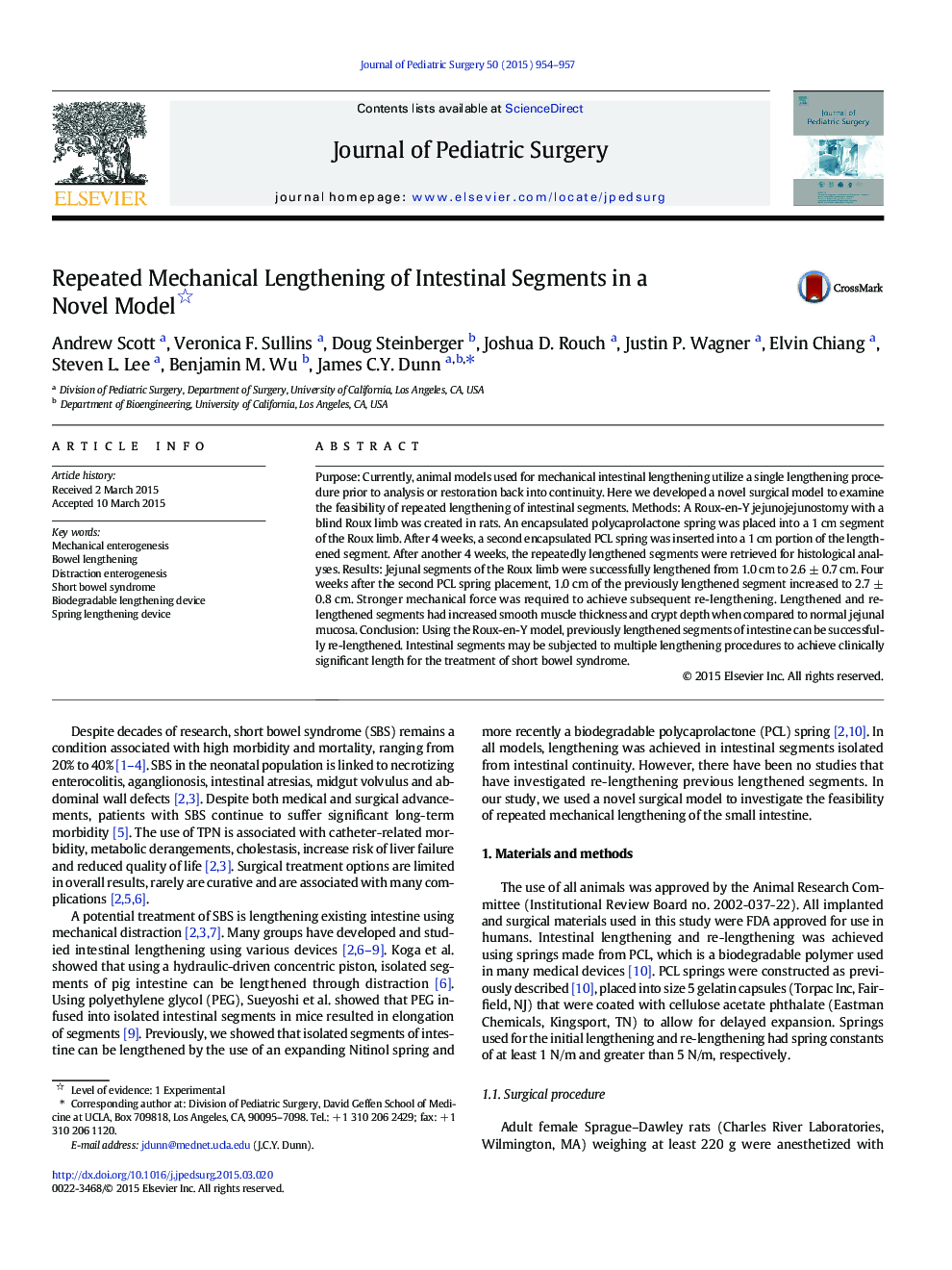| Article ID | Journal | Published Year | Pages | File Type |
|---|---|---|---|---|
| 4155044 | Journal of Pediatric Surgery | 2015 | 4 Pages |
Purpose: Currently, animal models used for mechanical intestinal lengthening utilize a single lengthening procedure prior to analysis or restoration back into continuity. Here we developed a novel surgical model to examine the feasibility of repeated lengthening of intestinal segments. Methods: A Roux-en-Y jejunojejunostomy with a blind Roux limb was created in rats. An encapsulated polycaprolactone spring was placed into a 1 cm segment of the Roux limb. After 4 weeks, a second encapsulated PCL spring was inserted into a 1 cm portion of the lengthened segment. After another 4 weeks, the repeatedly lengthened segments were retrieved for histological analyses. Results: Jejunal segments of the Roux limb were successfully lengthened from 1.0 cm to 2.6 ± 0.7 cm. Four weeks after the second PCL spring placement, 1.0 cm of the previously lengthened segment increased to 2.7 ± 0.8 cm. Stronger mechanical force was required to achieve subsequent re-lengthening. Lengthened and re-lengthened segments had increased smooth muscle thickness and crypt depth when compared to normal jejunal mucosa. Conclusion: Using the Roux-en-Y model, previously lengthened segments of intestine can be successfully re-lengthened. Intestinal segments may be subjected to multiple lengthening procedures to achieve clinically significant length for the treatment of short bowel syndrome.
